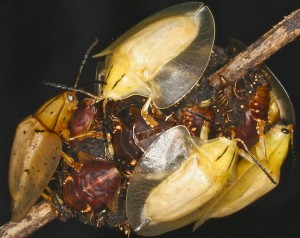
Acromis sparsa female (left) guards here progeny from egg to eclosion (right, newly emerged adults). https://you.stonybrook.edu/vencllab/files/2016/04/vencl-Plata-C.-srygley-2013-ecol-entomol-193v1z9.pdf
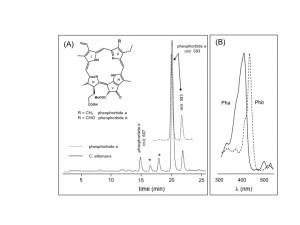
Chromatographic separation and identification of chlorophyll catabolites from fecal shields of Chelymorpha alternans. (A) LC-MS profile of the methanolic extract of larval shields (straight line) and the pheophorbide a standard (dotted line). The two peaks for Pha represent epimeric esters of ring V , Pha (R = CH3), Phb (R = CHO), (*) unknown compounds. (B) UV spectra of Pha (straight line) and Phb (dotted line). https://you.stonybrook.edu/vencllab/files/2016/04/Vencl-et-al-2009-copy-18u840x.pdf
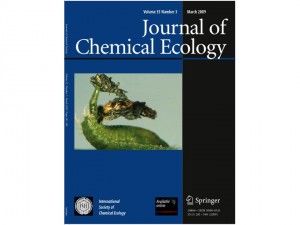
Instead of ridding themselves of their digestive wastes, the larvae of tortoise beetles (Chrysomelidae: Cassidinae) have the peculiar habit of voiding feces onto their backs, where it accumulates to form a coating or shield. Shields do not rest passively on the dorsum. They have a solid infrastructure formed by the accumulation of molted skins, which is itself attached to a highly movable, forked caudal process located on the penultimate abdominal segment. Adding to the shield system is a unique telescoping anus that precisely applies feces to the shield armature. Held like parasols above the larvae, shields can be aimed and waved in any direction. https://you.stonybrook.edu/vencllab/files/2016/04/Vencl-et-al-1999-copy-t21yds.pdf
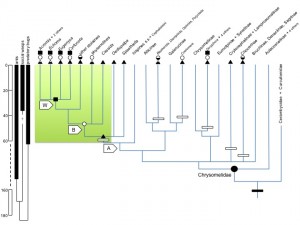
Hypothesized relative timing of predator fossils, predator guild selection events, and defensive trait evolution in the tortoise beetles, sensu stricto, and related taxa in the Chrysomelidae. https://you.stonybrook.edu/vencllab/files/2016/04/10.1007_s10682-012-9603-1-1h4uwai.pdf
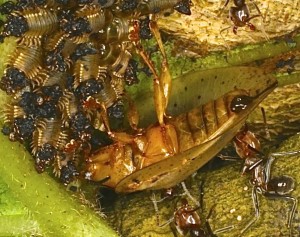
Female Acromis sparsa defending her larval progeny against Azteca ant attack with a bull-dozer movement. Larvae (left) also bear chemically-laden fecal shields and rest in tight rosettes as a defensive response to attack. https://you.stonybrook.edu/vencllab/files/2016/04/Vencl-et-al.-2010-online-2jbd9j5.pdf
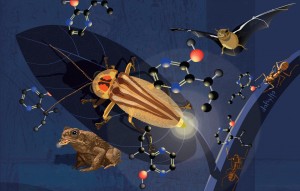
Photuris trivittata fireflies emit pyrazine and flash to form an aposematic warning signal, which is an effective defense against some, but not all predatory enemies.
